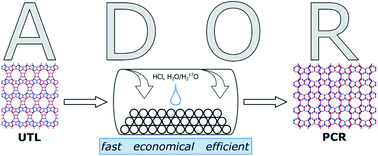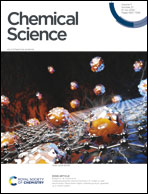Mechanochemically assisted hydrolysis in the ADOR process†
Abstract
The ADOR (Assembly-Disassembly-Organisation-Reassembly) process for zeolites has been shown to produce a number of previously unknown frameworks inaccessible through conventional synthesis methods. Here, we present successful mechanochemically assisted hydrolysis of germanosilicate zeolite UTL leading to ADOR products under mild conditions, low amounts of solvent and in short reaction times. The expansion of zeolite synthesis into the realm of mechanochemistry opens up feasible pathways regarding the production of these materials, especially for industrial purposes, as well as an exciting application for economical enrichment of materials with the low natural abundance NMR-active isotope of oxygen, 17O. The results from mechanochemically assisted hydrolysis differ from those seen in the traditional ADOR approach: differences that can be attributed to a change in solvent availability.



 Please wait while we load your content...
Please wait while we load your content...